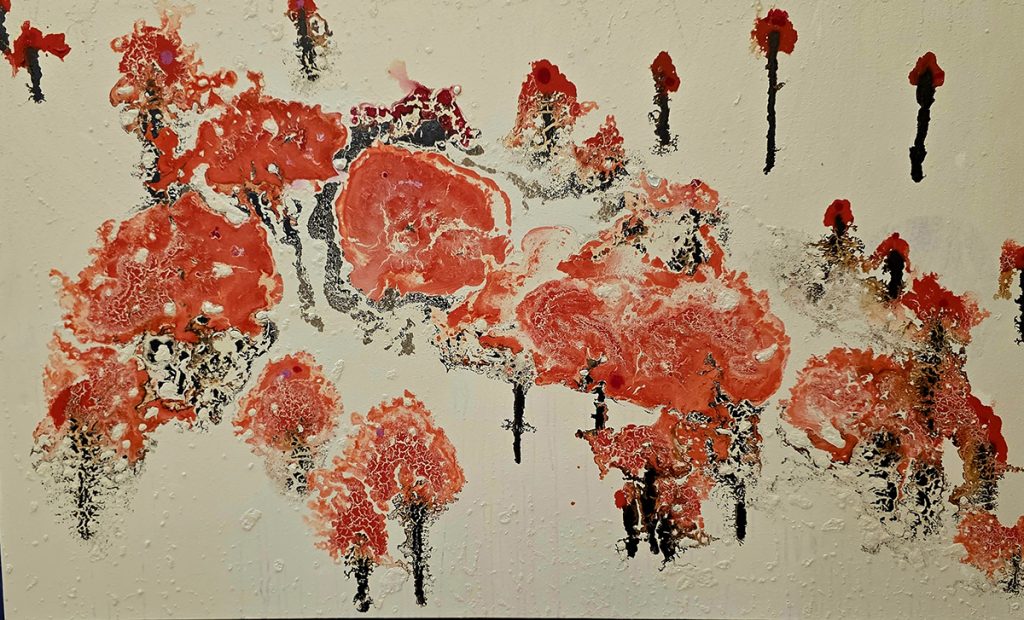Ted Barr’s journey as an artist is as unique as his life story. Born in Nevodar, Romania, near the Black Sea, his earliest memories were shaped by the pull of water and the flow of migration. At just four years old, his family moved to Israel, carrying him from one shore to another. This shift marked the beginning of a life built on exploration—geographic, spiritual, and cosmic. Barr’s curiosity has never been limited to one field or one view of the world. His work draws from the vastness of outer space while remaining deeply rooted in the fragility of human life. He paints not only with color and form but also with the questions that haunt existence: Where do we come from, and how brief is our time beneath the stars?
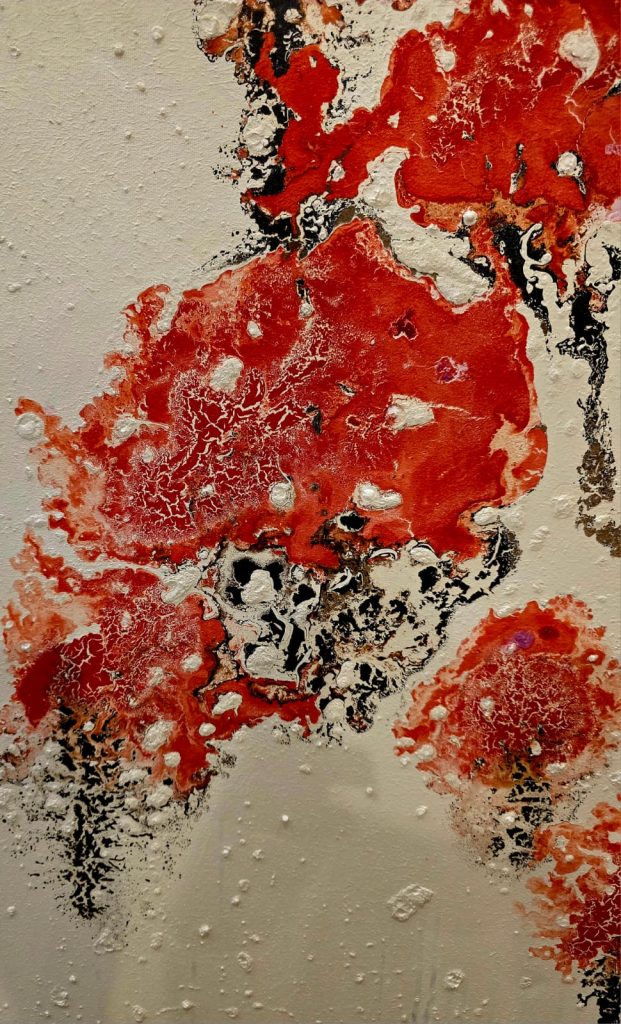
The SuperNova Series
The SuperNova series is Barr’s way of exploring what it means to live within fragility. These paintings carry the language of cosmic explosions and natural metaphors, binding the distant with the immediate. In the piece SuperNova – Anemone, Barr narrows this exploration into a single flower, creating an image that vibrates with both vitality and loss.
The Flower as Human Time
The Anemone is not just a flower in Barr’s hands—it becomes a distillation of human life. Known for its brief bloom, the Anemone flashes into existence for only a few days, then fades. This rhythm of arrival and disappearance mirrors the human condition. A full lifetime, seen in the scale of galaxies, is still just a spark in the dark. In Anemone, Barr reminds us that no matter how much time we think we hold, we are always a flicker against the expanse of cosmic time.
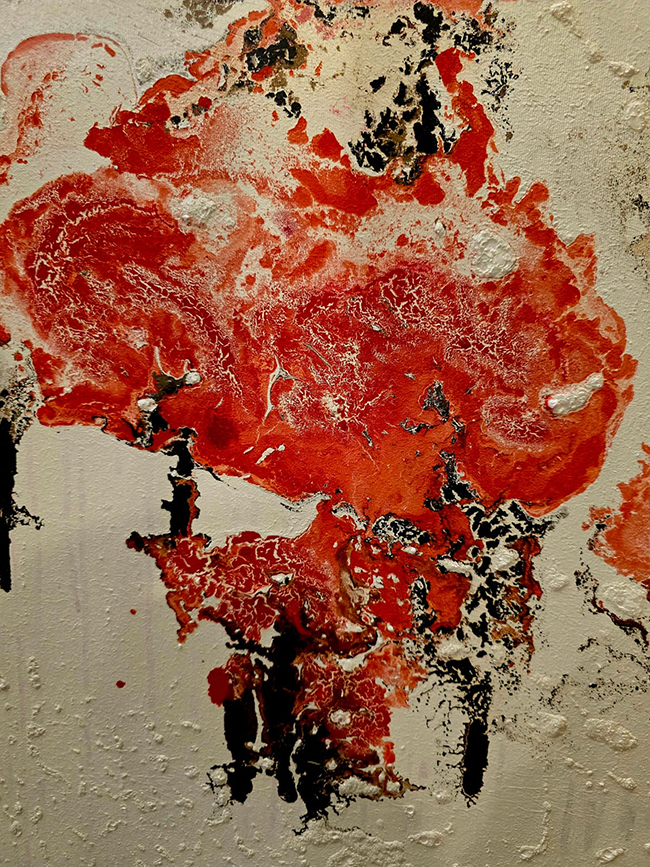
Crimson as Blood, Crimson as Mortality
Color carries weight in this painting. The crimson petals are more than decoration; they stand in for the bloodstream itself. Held within the body, red is the force of life, flowing and renewing. But once spilled, that same red becomes a reminder of mortality, of the line that separates presence from absence. This duality is central to Barr’s vision—the knowledge that the same substance which sustains us can also mark our end. The painting invites us to sit with this fragile balance, not to deny it.
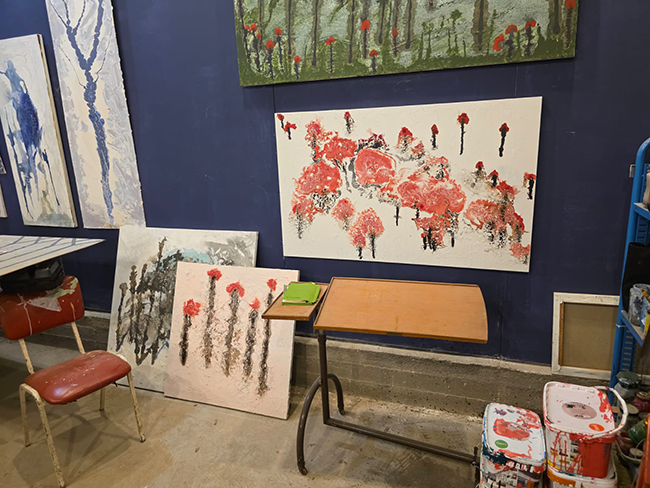
A Memorial Charge
Anemone is not an abstract meditation alone. It carries the grief of real events. Barr connects the work to the Nova Festival tragedy, where music and joy were shattered by sudden violence. The Anemone becomes a stand-in for the lives lost—young, bright, and cut short in an instant. Yet the symbol stretches further, reaching to all innocent war victims across times and places. The flower is their shared elegy, a universal reminder that violence leaves behind not only absence but memory, too.
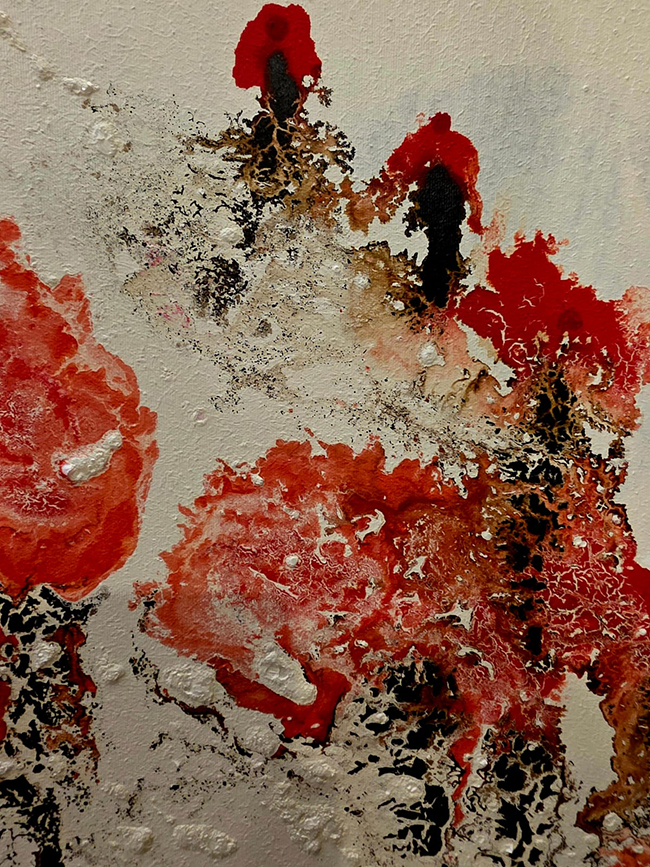
Stars and Flowers
Barr’s choice of the supernova as a companion metaphor deepens the work. A star burns at its brightest just before it collapses. Its final moment is not quiet but blazing, leaving an afterglow that travels across space and time. In the same way, human lives often shine with intensity in the space of memory after they are gone. The Anemone, brief and delicate, is transformed into a star in this painting—a bloom that echoes both the botanical and the celestial. It vanishes, but its light remains.
Between Earth and Cosmos
The dialogue between the earthly and the cosmic is what gives Anemone its resonance. A flower rooted in soil speaks with the language of distant suns. Human life, small and fragile, is shown as part of a greater cycle of appearance and disappearance. The painting suggests that we belong to both domains: we are earthbound, but our stories stretch into the cosmos. Each life, however brief, participates in that larger rhythm, like the pulse of stars that beat across the universe.
Closing Thoughts
In SuperNova – Anemone, Ted Barr creates more than a painting. He offers a meditation on life, loss, and memory, wrapped in the imagery of both nature and space. It is a work that carries personal grief while also reaching outward, binding together the universal truths of mortality and radiance. Through it, Barr shows us that even the most fleeting existence is not without weight. Each bloom, each spark, each human life—though brief—leaves behind an afterglow that lingers, a light that continues to move across the darkness.

